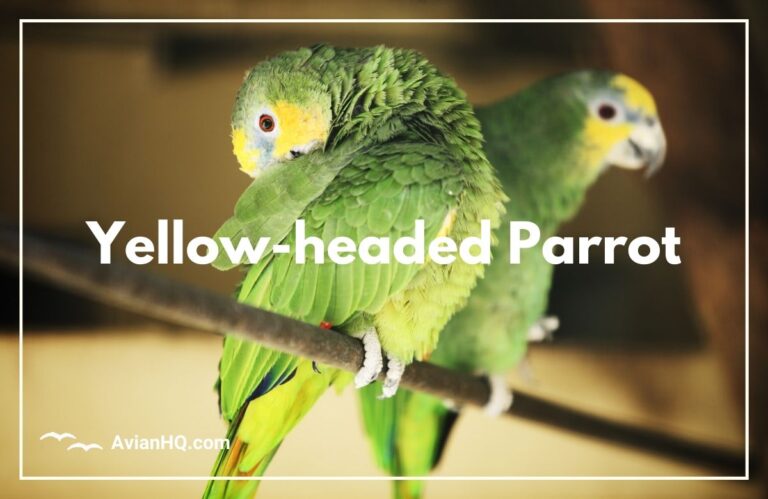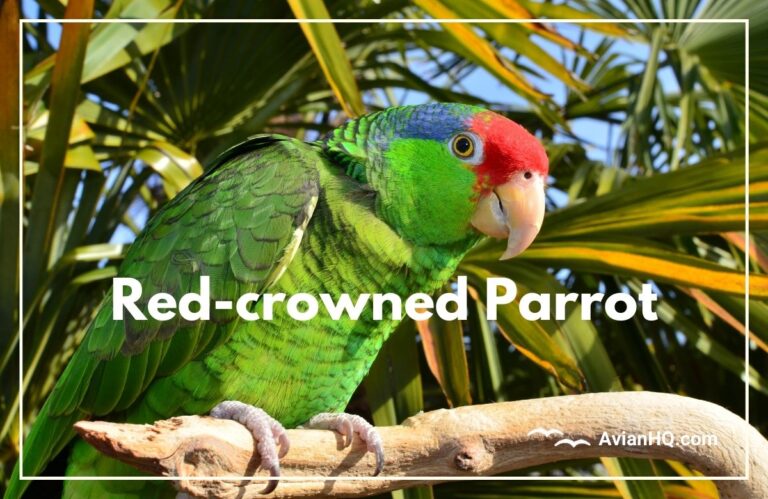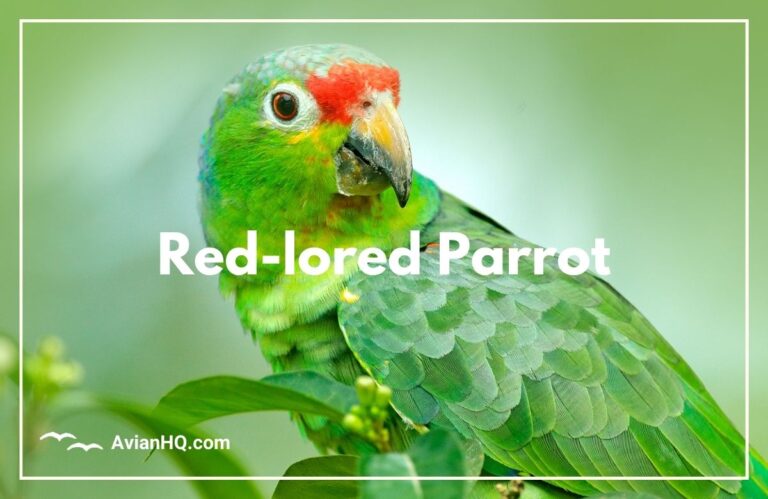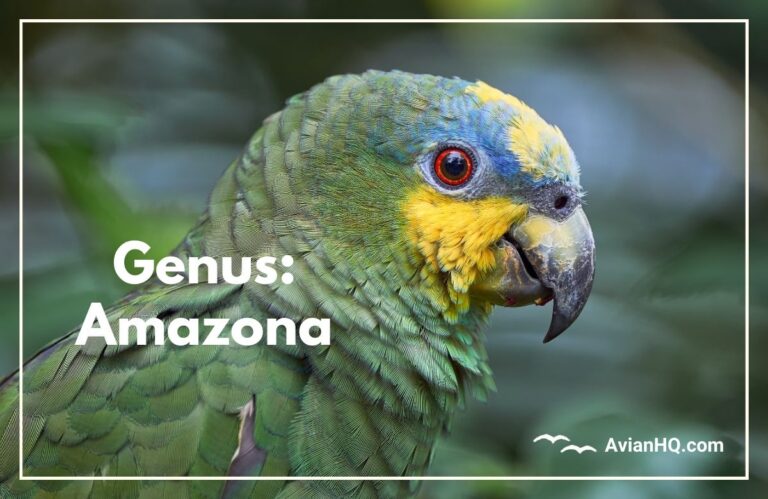Yellow-naped Parrot (Amazona auropalliata)
The yellow-naped amazon parrot is a colorful and vocal bird native to Central America. With its bright green plumage accented with yellow and red, this parrot is a beautiful sight. But beyond its striking looks, the yellow-naped amazon is also an intelligent and sociable creature.
These parrots live in flocks and form strong lifelong bonds with their mates. They communicate with a wide repertoire of squawks, screeches, and whistles. Yellow-naped amazons even develop regional dialects within their home ranges!
But what really makes this species stand out is its ability to mimic human speech and other sounds with incredible clarity. Their advanced vocal abilities are one reason yellow-naped amazons are popular as pets.
“Yellow-naped amazons are sought after for the pet trade, but trapping wild birds has decimated their populations.”
Sadly, the trapping of these birds for aviculture is also driving them toward extinction. Over 92% of yellow-naped amazons have been lost in recent decades. With fewer than 5,000 left in the wild, they are now classified as Critically Endangered.
In this article, you’ll learn all about the yellow-naped amazon parrot – from its taxonomy and physical traits to its habitat, diet, reproduction, and more. We’ll explore why these birds make charming but challenging pets. And we’ll investigate conservation efforts attempting to save this species before it disappears completely.
History and Taxonomy
The yellow-naped amazon parrot was first described scientifically by French naturalist René Primevère Lesson in 1843. He gave the species the scientific name Psittacus auripalliatus, later changed to the current name Amazona auropalliata.
The genus name Amazona refers to these parrots’ origin in the Americas. The species name auropalliata is derived from Latin words meaning “gold” and “cloaked,” likely referring to the vibrant yellow patches on the nape and crown of these birds.
Over the years, taxonomic classification has varied on whether the yellow-naped amazon is a full species or a subspecies of the yellow-crowned parrot (Amazona ochrocephala). Currently, most experts recognize it as a distinct species with three defined subspecies:
- A. a. auropalliata – Occurs along the Pacific coast from southern Mexico to northwestern Costa Rica
- A. a. parvipes – Found in northeastern Honduras and Nicaragua
- A. a. caribaea – Native to the Bay Islands of Honduras
These subspecies differ slightly in size and coloration but share the overall green plumage with yellow neck and head markings. More research on genetic divergence between populations may further revise the taxonomy of the species.
The yellow-naped parrot’s common name refers to the distinctive yellow band stretching across the hindneck and nape. This bright splash of color inspired both its English and scientific names.
Physical Appearance
The yellow-naped amazon is a medium-sized parrot measuring about 12 to 13 inches (30 to 33 cm) long. Their wingspan ranges between 13 to 14 inches (33 to 36 cm).
These parrots typically weigh 8.8 to 13 ounces (250 to 370 grams). Males and females appear nearly identical in plumage. The most notable feature of these birds is the bright golden yellow band stretching across the entire nape, contrasting with the emerald green feathers covering the rest of the body.
Yellow patches may also appear on the crown, forehead, cheeks or lores. Their upper wing coverts display vivid scarlet-red patches. Iridescent turquoise-blue accent feathers are found at the bend and edges of the wings as well as on the tail.
Yellow-naped amazons have dark gray colored bills with a paler gray cere. Legs and feet are a solid grayish color. Around the eye is a narrow ring of bare white facial skin. And their iris color ranges from orange to red-orange.
The three subspecies show only minor variations in size and markings. For example A. a. parvipes averages slightly smaller than the others. And A. a. caribaea often has a more orange or burnt yellow hue to the nape rather than bright lemon yellow. But most individuals across the species’ range share the typical yellow-naped plumage pattern.
Habitat and Distribution
The yellow-naped amazon is endemic to the Pacific regions of Central America. Its native range extends along the Pacific coast from southern Mexico through Guatemala, El Salvador, Honduras, Nicaragua and northern Costa Rica.
These parrots reside in tropical and subtropical habitats at elevations up to 5,500 feet (1,700 m). Their natural ecosystems include semi-arid woodlands, dry forests, pine-oak forests, mangroves, and savannas. Yellow-naped amazons roost in holes of old-growth trees and nest in natural tree cavities.
In parts of their historic range like Mexico and Guatemala, yellow-naped amazon populations have been nearly extirpated. But decent numbers still remain on some Pacific islands including Coiba Island of Panama and Ometepe Island within Lake Nicaragua.
Small introduced populations have also become established in areas like Puerto Vallarta, Mexico where escaped pets adapted to the suitable habitat. But no major stable populations currently exist outside the species’ native boundaries.
Within their geographic range, yellow-naped amazons migrate seasonally to track the fruiting and flowering of certain tree species. But the increasing fragmentation of their dry forest habitat has disrupted these natural movements.
Diet and Feeding
Yellow-naped amazons are omnivorous, feeding on a wide variety of seeds, nuts, fruits, berries, blossoms and vegetation. Their diverse diet includes items like figs, Cecropia leaves, nuts from almond and coconut palms, mahogany tree seeds, and pepper tree berries.
These parrots use their curved grey beaks like a can opener to crack hard nuts and seeds. Their muscular tongues help manipulate food inside the mouth. Yellow-naped amazons have also been observed eating small amounts of snails or insects for extra protein.
Foraging takes place high up in the forest canopy as well as lower down among bushes and shrubs. Sometimes these birds descend to the ground to ingest bits of clay or minerals. This habit known as geophagy may help them derive nutrients or counter toxins from other food sources.
Yellow-naped amazons are social feeders, traveling and eating in noisy flocks made up of mating pairs and family groups. Their strong jaws and adaptable diet allow them to exploit many food resources in their habitat. But the destruction of native forest habitats threatens the seed dispersal and pollination roles these birds serve in their delicate ecosystem.
Breeding and Reproduction
Yellow-naped amazons reach sexual maturity between ages 2 to 4. They form monogamous pair bonds that may persist for many years. The breeding season runs from March through May.
These parrots nest in natural tree cavities, readily using old woodpecker holes and palm hollows. Both sexes help scout for suitable nest sites, typically high on a tree trunk.
The female lays a clutch of 3 to 4 white eggs which she incubates for about 26 to 28 days while being fed by her mate. The altricial hatchlings are blind, helpless, and nearly naked at birth.
The chicks grow quickly, developing green down around 2 weeks old. They fledge the nest at approximately 8 to 12 weeks of age but continue to be fed by their parents for several more months as they learn to forage on their own.
Young amazons reach full adult size by 18 months old. But they may require 2 to 4 years to obtain mature adult plumage and coloration, especially vibrant facial hues. The average lifespan in the wild is estimated between 25-30 years.
Behavior and Ecology
Yellow-naped amazons are highly social and intelligent birds. They live in permanent flocks of up to 30 to 40 individuals outside of breeding season. These groups likely offer protection from predators.
Pairs establish their own nesting territories within the flock’s home range but may tolerate other amazons nearby. The mating bonds between pairs form slowly over several years before they successfully raise young together.
These parrots are powerful flyers capable of long distance travel across their habitat. Their flight style combining rapid wing flapping with short glides helps them maneuver deftly through dense forest.
Yellow-naped amazons display complex vocal behaviors including various squawks, screeches, whistles and mimicking abilities. Regional groups develop unique local dialects of distinct contact calls used to communicate within flocks. Pairs may also perform synchronized duets.
The species plays an important ecological role in seed dispersal and forest regeneration. Their survival helps maintain biodiversity since they disperse seeds of over 25 large forest tree species. But habitat destruction threatens this critical function.
As their remaining fragmented population declines, yellow-naped amazons show increasing signs of stress and disease. Addressing these trends requires protecting not just their numbers but also the health of their ecosystem.
Conservation Status
The yellow-naped amazon is listed as Critically Endangered on the IUCN Red List. The global population is estimated at less than 5,000 mature individuals and continues decreasing.
These parrots have lost over 90% of their numbers in recent decades largely from excessive trapping for the pet trade. Tens of thousands of young birds have been smuggled out of Central America to supply demand in the U.S., Europe, and Asia.
Deforestation and habitat loss also threaten remaining populations. Their low reproductive rate makes it difficult for yellow-naped amazons to bounce back as their breeding areas and food sources disappear.
Increased legal protections aim to curb the illegal parrot trade devastating this species. Yellow-naped amazons are now listed in Appendix 1 by CITES which prohibits commercial international trade, and they are protected under national laws across their native countries.
But pressure from the lucrative pet markets still fuels rampant poaching. Stronger enforcement and scaled-up anti-poaching units are desperately needed. Ecotourism may also help provide economic alternatives to trapping wild parrots.
Captive breeding programs in accredited zoos and conservation centers offer some hope if habitat and stability can be restored in the region. But saving the yellow-naped amazon requires urgent action before the species vanishes forever.
Conclusion
The vibrant yellow-naped amazon parrot is an iconic Central American species, long valued for its beauty, intellect, and talking abilities. But our fascination with these birds as pets or status symbols has led them down a tragic path toward extinction.
Trapping wild parrots for aviculture has decimated their populations across Mexico, Central America, and surrounding islands. Habitat loss also threatens their limited ability to recover. Time is running out to reverse the decline of the yellow-naped amazon.
Saving this amazingly social and vocal species will require aggressive protections, enhanced breeding programs, and eliminating consumer demand for wild-caught parrots. Whether future generations can continue to enjoy encounters with yellow-naped amazons depends on the real steps we take today to preserve them and their native forests.







